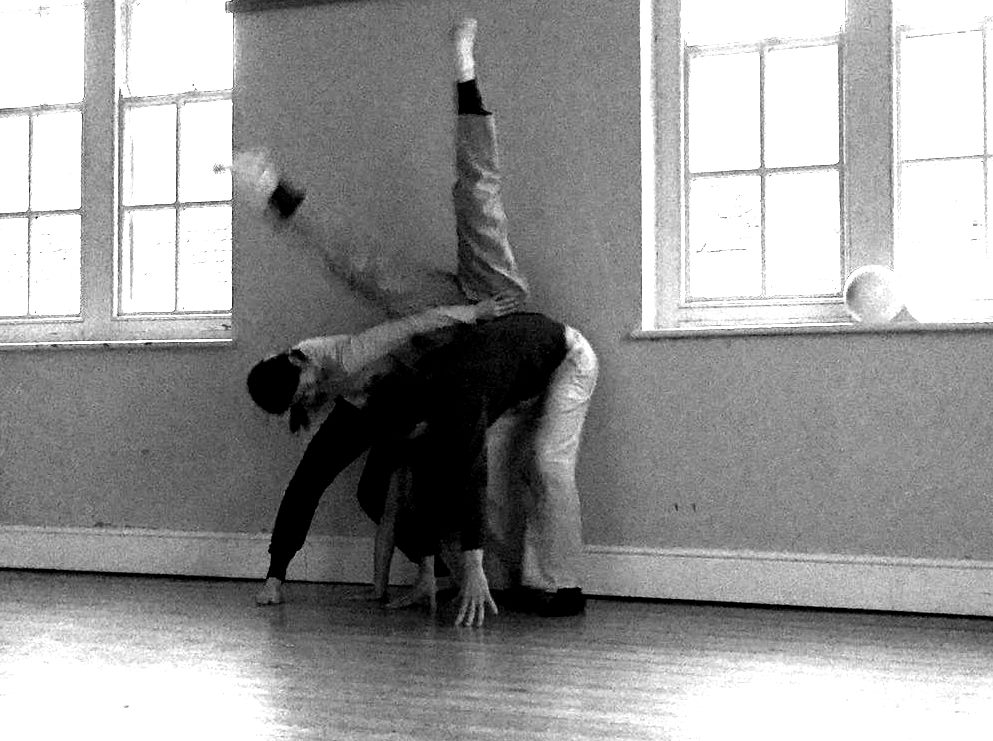Tennis balls, balloons and cards are all ‘props’ or tools which can be used in teaching contact improvisation. But how?!
Balls
A point of contact – between dancers – sliding it, rolling it, etc, is a basic part of learning contact improvisation. In one of my workshops, I used a tennis ball held and moved between the dancing bodies as a way to focus into it. But don’t drop the ball by releasing the point of contact. The balls can take all the pressure which you can subject it too and still stay intact. It also offers a nice massage too!
Balloons
In 2017, I attended a workshop with teacher Elske Seidel. The workshop ‘Widening the space – Spirals & Spherical Space’ was partly about fluidity. At the beginning of the workshop there was body-work, and we used water-filled balloons to apply pressure to the body of our partner who lay on the floor. We rolled the balloon over he surface of their body with varying pressures but never enough to burst it!

This month [December 2018], Seow Yi Qing facilitated a workshop at Oxford Contact Dance where we used inflated balloons. We worked with a partner, and our task was to travel with a balloon between the two of us and down the room, crossing the floor from one end to the other. Dropping the balloon was not allowed – it had always to be between the partners and off the floor – we could move the balloon by rolling, sliding and squishing it! We could also move ourselves in relation to it and our partner, to ensure the balloon never touched the ground. Sometimes we were on our feet and sometimes on the floor in other ways. While we couldn’t always see the balloon, we could always feel it or sense it in some way. One thing which I really liked about this exercise is that it’s important not to apply too much pressure otherwise the balloon will burst! So it teaches us about a way of giving weight in a measured way which is less than all your weight or less than all the pressure.
Cards
I’d not seen a pack of cards like ‘86 Aspects of Composition‘ until Seow Yi Qing showed us in the workshop I mentioned above. It’s like a pack of playing cards but each card has text on both sides. On one side is a single word, and on the other is a fuller explanation of the word. For example, the word ‘leadership’ or ‘control’ is on one side and the explanation of the word on the other. The way we used these cards was to take a card without looking, and for our dance partner to similarly take another card but not to tell each other the text on the card. We then had to dance with this word in mind, and with our partner. It’s as if we had a score in our mind without our partner knowing what it was. This was great fun! We also tried it again with another card – a second card with a second partner – and forgetting the contents of the first round. Finally, we tried combining the words from both cards in a dance with our third partner dance. The cards introduce a highly reflective aspect to our dance practice.
These devices: balls, balloons or cards are useful tools in pushing our dancing and developing technique. In subsequent dances we retain our experience and embodiment of it.
